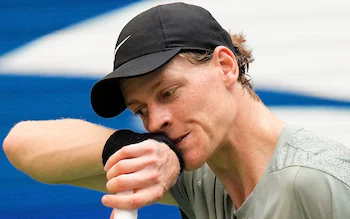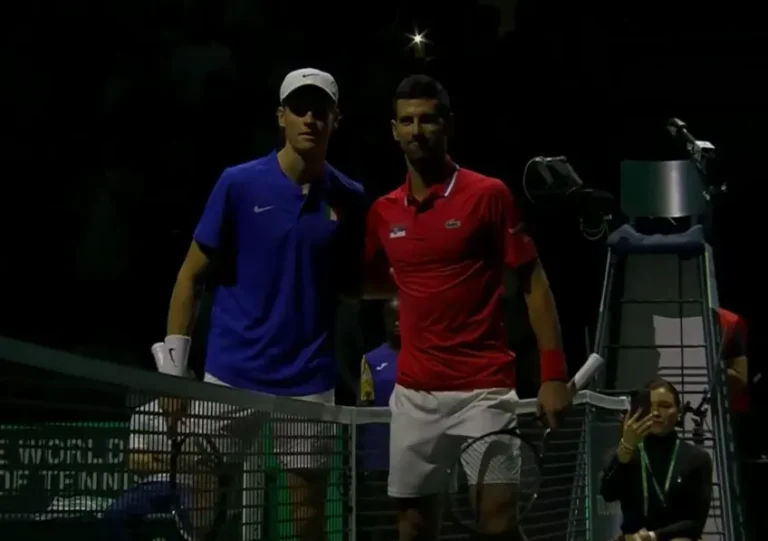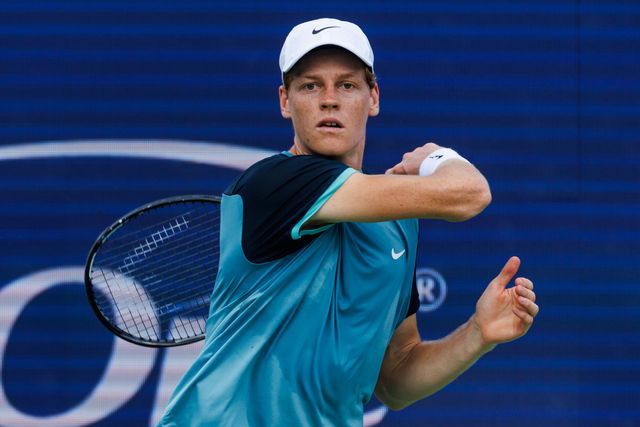“Jannik Sinner’s Career in Crisis: A Nightmare Spiraling Out of Control for Tennis’ Dominating Star!”
The doping case involving world No. 1 Jannik Sinner has cast a harsh spotlight on tennis’s anti-doping protocols, raising serious questions about their credibility and fairness. Sinner’s ability to avoid a minimum two-year ban after failing two drug tests left many baffled as to how he and his legal team managed such a defense. Typically,…
The doping case involving world No. 1 Jannik Sinner has cast a harsh spotlight on tennis’s anti-doping protocols, raising serious questions about their credibility and fairness.
Sinner’s ability to avoid a minimum two-year ban after failing two drug tests left many baffled as to how he and his legal team managed such a defense. Typically, when a top player is cleared of fault in a doping inquiry, there’s an expectation of solidarity among peers. But instead of support, reactions ranged from skepticism to outright disbelief. Novak Djokovic called for “clear protocols,” while Nick Kyrgios mocked the explanation of a massage cream causing Sinner’s positive test for clostebol, a banned steroid. “Yeah, nice,” Kyrgios scoffed.
Now, the situation has escalated as the World Anti-Doping Agency (WADA) has expressed its own doubts. In a stunning development, WADA rejected the ITIA’s ruling of “no fault or negligence” and announced plans to seek a one- to two-year ban for Sinner through the Court of Arbitration for Sport.
Sinner, a two-time major champion this season, appeared visibly shaken after learning of WADA’s appeal following his latest win in Beijing. For the 23-year-old and the sport, this is a crisis spiraling out of control. Confidence in the system that allowed Sinner to continue playing with minimal penalties has evaporated. WADA’s intervention reflects a broader distrust in tennis’s ability to police itself, especially given the murky circumstances surrounding Sinner’s case, where provisional suspensions lasted only a few days, and the investigation remained hidden from the public for six months.
This lack of transparency contrasts starkly with how lower-ranked players face prolonged investigations and public scrutiny. Players without access to high-powered legal teams can see their reputations tarnished for months or years while they await a chance to clear their names.
Unanswered questions linger, including why no anti-doping violations were filed against Sinner’s fitness trainer Umberto Ferrara or his physiotherapist Giacomo Naldi, both of whom possessed the clostebol-containing cream that led to Sinner’s positive test. Sinner has since dismissed both from his team, but the tribunal’s ruling did little to explain why Ferrara and Naldi faced no formal charges for possessing a prohibited substance without a valid therapeutic use exemption, a clear breach of WADA’s code.
Sinner argued that he was the victim of contamination by his team, but anti-doping responsibilities extend beyond the individual athlete. As the tribunal itself stated, “The player is responsible for the actions around them as well as their own.” This raises the question: is Sinner’s deflection of blame onto his support staff truly plausible?
The procedural flaws don’t end there. The tribunal’s report revealed that one of the three independent experts knew Sinner’s identity, compromising the anonymity that is essential for impartiality in such investigations. This lapse, combined with the perception that tennis operates a two-tier anti-doping system, only deepens the controversy. While Sinner was quickly cleared, British player Tara Moore spent 19 months fighting to prove her positive tests for nandrolone and boldenone were the result of contaminated meat.
As WADA moves to appeal, the stakes for Sinner and the sport are higher than ever. There’s a chance Sinner could win another Australian Open title in January, even as WADA fights to impose a multi-year ban. The situation is a damning indictment of tennis’s anti-doping efforts and the fragile faith players and fans have in the system.






